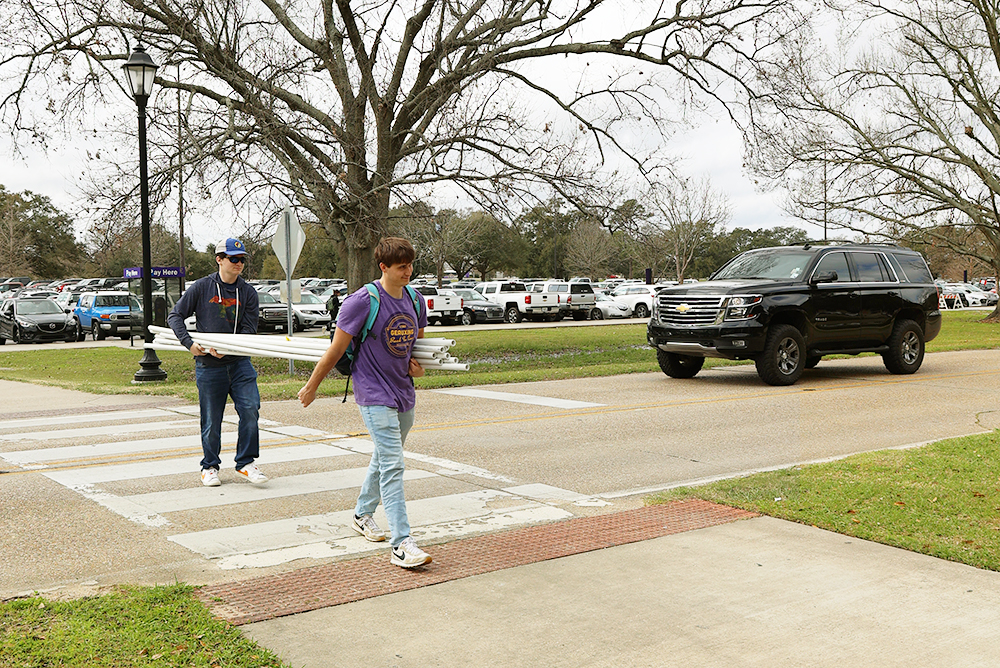LSU CEE Professor Working to Increase Pedestrian Safety
February 15, 2023
 BATON ROUGE, LA – More drivers and more distractions means more deaths on the road.
According to the National Highway Traffic Safety Administration, traffic-related pedestrian
fatalities are on the rise, with Baton Rouge listed as 16th on a national list. However,
thanks to a $175,000 grant from the Louisiana Transportation Research Center and LA
DOTD, LSU Civil and Environmental Engineering Professor Hany Hassan intends to find
out what can be done to decrease these fatalities.
BATON ROUGE, LA – More drivers and more distractions means more deaths on the road.
According to the National Highway Traffic Safety Administration, traffic-related pedestrian
fatalities are on the rise, with Baton Rouge listed as 16th on a national list. However,
thanks to a $175,000 grant from the Louisiana Transportation Research Center and LA
DOTD, LSU Civil and Environmental Engineering Professor Hany Hassan intends to find
out what can be done to decrease these fatalities.
“The alarming increase in pedestrian fatalities across the globe is concerning,” Hassan said. “The NHTSA says that 36,096 people were killed in transportation-related crashes in the US in 2019, of which 6,205 were pedestrians. Several existing national recommendations provide advice on putting pedestrian safety solutions along low-speed highways at midblock and uncontrolled sites, however, information on high-speed arterials is scarce.”
Hassan, who serves as the principal investigator on the project with Arora Engineers as a co-PI, is developing a statewide guideline on the provision of pedestrian fatalities on Louisiana’s high-speed roads. It’s expected that the new guideline will propose modifying DOTD’s complete streets policy and relevant Engineering Directives and Standards manuals.
“This project will provide several valuable outputs, including developing a matrix of design features for the safe movement along and across roadways, proposing recommendations for priority of pedestrian facilities based on pedestrian volume and safety, and developing a statewide guideline on the provision of pedestrian fatalities on Louisiana’s high-speed roads,” Hassan said.
NHTSA estimates that from January to September 2022, traffic-related pedestrian deaths in the US rose 2%, while cyclist deaths rose 8%. From 2010 to 2019, there was a 45% increase in people struck and killed by vehicles while walking, according to Industry Dive. Older adults, people of color, and people walking in low-income communities are disproportionately represented among the fatalities. Black people were struck and killed by drivers at an 82% higher rate than White, non-Hispanic Americans. That rate jumped to 221% for American Indian and Alaska Native people.
According to Strong Towns, an organization dedicated to making cities safer and more livable, the sharp rise in traffic-related pedestrian deaths from 2010 to 2019 is due to a few factors. The first is the rise in number of big trucks and SUVs that have larger blind spots and larger grills, which are likely to strike a person in the chest rather than just the legs. Another factor is street design. Most traffic fatalities occur on “stroads”—wide urban street/road hybrids with multiple lanes, 35-50 mph speed limits, and multiple access points and turning traffic. Many pedestrians get stuck in the middle trying to walk home, buy groceries, or catch a bus.
According to Smart Growth America’s Pedestrian Danger Index, the number one most dangerous city for pedestrians is Orlando-Kissimmee-Sanford, Fla. The state actually accounts for nine of the top 20 cities on the list. Baton Rouge is listed as No. 16, two spots above the Houston area.
Hassan’s research, in addition to the data available, should aid him in the development of pedestrian safety for Louisiana.
“The findings of this research will help transportation authorities in Louisiana and elsewhere to improve their efforts in improving the safety of pedestrians,” he said.
Like us on Facebook (@lsuengineering) or follow us on Twitter and Instagram (@lsuengineering).
###
Contact: Libby Haydel
Communications Specialist
225-578-4840
ehaydel1@lsu.edu